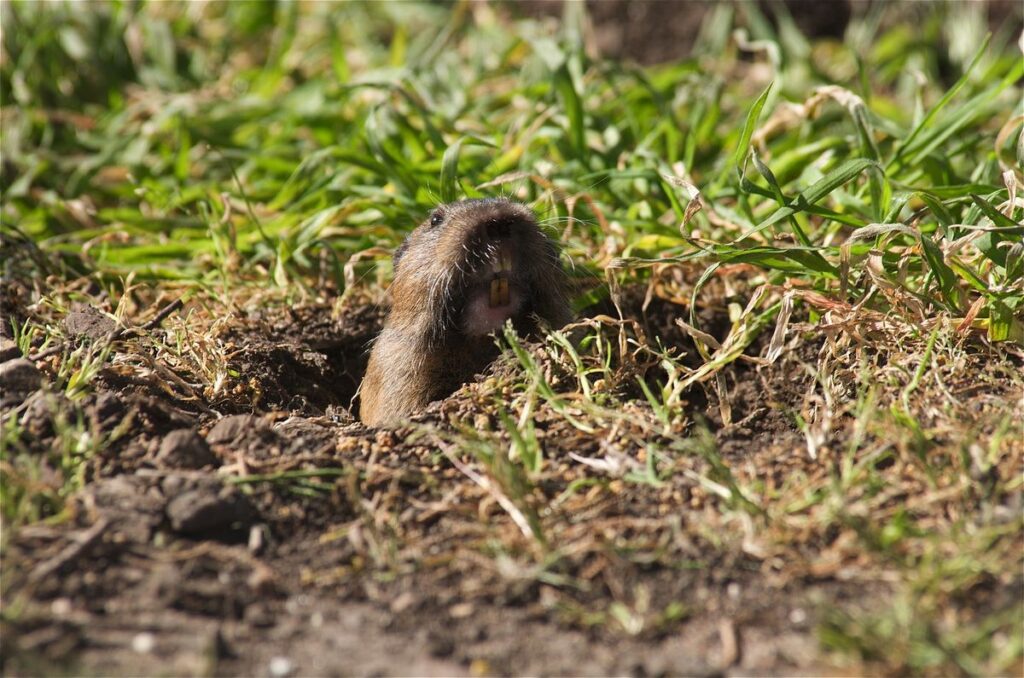Pocket gophers are a type of burrowing rodent known for their extensive tunnels.
Jerry Kirkhart via Flickr under CC BY 2.0
In May 1980, a magnitude-5.1 earthquake accompanied by an avalanche flipped the switch on a volcano in Washington state. With pressure suddenly removed from the magma below, Mount St. Helens spewed lava, ash and debris in the southwestern part of the state. It became the most destructive eruption in United States history. However, not all was lost.
On a destroyed landscape, scientists wondered how life could be restored—so they brought in gophers to dig around in specific areas for a single day. Now, more than four decades later, the benefits from those 24 hours remain visible.
Back then, the scientists only planned to test the short-term chain reaction of the stocky rodents’ activity, says Michael Allen, a biologist at the University of California, Riverside, in a statement. “Who would have predicted you could toss a gopher in for a day and see a residual effect 40 years later?”
Allen and others published a paper in early November in Frontiers in Microbiomes suggesting the gophers played a key role in restoring fungi and bacteria in the soil—and the health of gopher-inhabited areas stood in stark contrast to areas where the gophers had never been.
On May 19, 1980, the day after the main eruption, Mt. St. Helens (shown from the south) was still erupting, with the ash cloud being carried to the northeast.
Pacific Northwest National Laboratory
In 1983, when Allen and other scientists flew in by helicopter to an area devastated by lava, they found only about a dozen plants surviving there. Even the seeds that birds had dropped in the area were struggling to grow. In an experiment, the scientists airlifted local gophers, known as northern pocket gophers, to two enclosed pumice plots for a day.
“Bringing them there was like bringing a mini-ecosystem just for a short time,” says lead author Mia Maltz, a soil microbial ecologist at the University of Connecticut, to New Scientist’s James Dinneen.
The scientists hoped the gophers would help restore the ecosystem with their natural digging activities and defecation, which would fertilize and aerate the soil and bring in microorganisms like bacteria and fungi. Although the burrowing rodents are often considered pests, “we thought they would take old soil, move it to the surface, and that would be where recovery would occur,” Allen explains in the statement.
Past research has shown how these animals are ecosystem engineers. In a study from 2022, gophers were described as doing simple “farming.” They turned over the soil by tunneling, dispersed their waste within their burrows—a form of fertilizer—and harvested roots for food, showing how their lifestyle can promote rich soils and root production.
“Gophers are shaping the plants, as well as the soil,” Francis (Jack) Putz, a biologist at the University of Florida who worked on the 2022 research, told National Geographic’s Sofia Quaglia at the time.
Something similar happened at Mount St. Helens. Six years after the gophers were brought in, the land they hadn’t touched remained largely barren, while 40,000 plants grew and thrived in the gopher plots, according to the statement.
The secret to life was mycorrhizal fungi. These organisms are essential to plant growth: They form symbiotic relationships with roots, allowing them to access more nutrients from the soil and protecting them from diseases. The gophers promoted growth of the fungi by burrowing and moving the soil around, which brought buried fungal spores to the surface and introduced new microbes.
“With the exception of a few weeds, there is no way most plant roots are efficient enough to get all the nutrients and water they need by themselves,” Allen says in the statement. “The fungi transport these things to the plant and get carbon they need for their own growth in exchange.”
Although the gophers’ impact seems like it has lasted for a long time, building rich soils takes much longer. For Miranda Hart, a biologist at the University of British Columbia in Canada, 40 years is a blink of an eye, she tells New Scientist.
“Those are still fresh, baby, newborn soils,” she adds.
The study also described other microorganisms that helped restore an old-growth forest on the volcano. After the forest was covered in ash, the trees’ needles fell off, and scientists worried the forest would collapse. But the pine, spruce and Douglas firs had their own type of mycorrhizal fungi that collected nutrients from the fallen needles, helping fuel rapid tree growth.
In other parts of the mountain, where loggers had clear-cut trees before the eruption, the area remains barren.
The single-day effort from the gophers underscores how various parts of an ecosystem are interdependent, especially in landscapes destroyed by natural disasters. The team effort between these rodents and the invisible mycorrhizal fungi has helped restore habitat in the aftermath of the most disastrous volcanic eruption in U.S. history.


